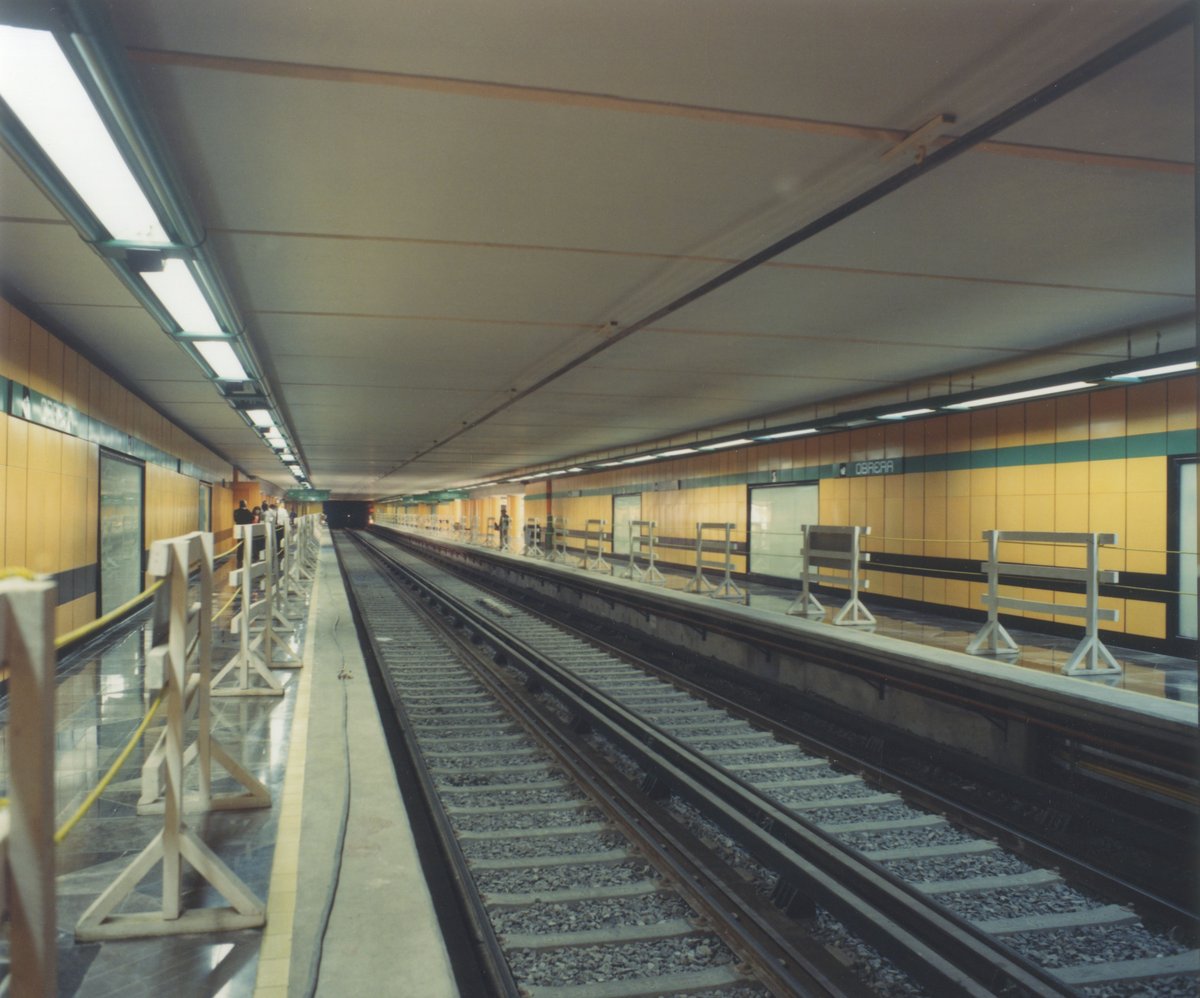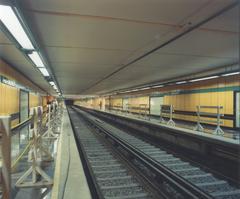
Obrera Mexico City: Visiting Hours, Tickets, and Historical Sites Guide
Date: 14/06/2025
Introduction to Colonia Obrera and Its Historical Significance
Colonia Obrera, nestled in the heart of Mexico City, stands as a living record of the city’s industrial evolution and the unwavering spirit of its working class. Established in the late 19th and early 20th centuries, the neighborhood—originally known as “El Cuartelito”—was conceived as a home for artisans and factory workers, quickly becoming a cornerstone of Mexico City’s social and economic transformation. Its streets have borne witness to both the triumphs of labor activism and the tragedies that spurred social reform, most notably the devastating 1985 earthquake that shaped modern labor and safety standards in Mexico (Mexico News Daily; Wikipedia).
Today, Obrera is characterized by a vibrant blend of its industrial legacy, colorful street art, community-driven revitalization, and a proud tradition of solidarity—a neighborhood where the past and present coexist in murals, markets, and memories (Atlas Obscura). This guide offers a comprehensive resource for visitors interested in exploring Obrera’s historical sites, practical travel tips, local culture, and must-see landmarks.
Table of Contents
- Introduction: Why Visit Colonia Obrera?
- Historical Overview
- Visiting Obrera: Hours, Tickets, and Tours
- Accessibility and Safety
- Landmarks and Points of Interest
- Obrera’s Social Fabric
- Monumento a la Costurera: Memory and Social Justice
- Exploring Obrera: Attractions and Practical Tips
- Monumento a la Revolución: Visitor Guide
- Summary
- References and Further Reading
Introduction: Why Visit Colonia Obrera?
Colonia Obrera offers a unique and authentic Mexico City experience—rich in history, culture, and community spirit. Beyond its industrial roots and pivotal contributions to labor movements, Obrera is a living neighborhood that welcomes visitors with bustling markets, striking street art, and a palpable sense of resilience. This guide will help you navigate its top historical sites, visitor logistics, and local highlights.
Historical Overview
Pre-Obrera: The Valley of Mexico and Early Urbanization
The area now known as Colonia Obrera was originally part of the Valley of Mexico, home to the Aztec capital of Tenochtitlán. After the Spanish conquest, Mexico City was built upon these ancient ruins, and over the centuries, the city expanded outward, eventually incorporating what would become Obrera (Mexico News Daily).
Emergence and Industrialization
Obrera was established during the industrial boom of the late 19th and early 20th centuries, designed to accommodate a growing population of artisans, seamstresses, and factory workers. The neighborhood’s grid layout facilitated easy access to the many textile workshops and factories that defined its landscape (Wikipedia; MexicoCity.cdmx.gob.mx).
Obrera and the Labor Movement
Obrera played a formative role in Mexico’s labor history. The neighborhood was home to the Flores Magón brothers and the influential Partido Liberal Mexicano, which helped ignite the Mexican Revolution. Its proximity to the city center made Obrera a focal point for strikes, protests, and enduring community organizing (Wikipedia; MexicoCity.cdmx.gob.mx).
Tragedy and Transformation: The 1985 Earthquake
The earthquake of 1985 devastated Obrera, collapsing factories and claiming the lives of hundreds of seamstresses—an event that exposed unsafe working conditions and galvanized the labor rights movement (Atlas Obscura). In the aftermath, Obrera’s communities led efforts for reform and recovery, marking a turning point in Mexico’s approach to labor and building regulation.
21st Century Revitalization
In recent years, Obrera has seen renewed investment in infrastructure, safety, and culture. Artists have repurposed industrial spaces, and a new wave of residents and visitors are drawn by the neighborhood’s authenticity and accessibility. Strategically located near Metro stations and major thoroughfares, Obrera is well-connected to the rest of Mexico City (Mexico News Daily).
Visiting Obrera: Hours, Tickets, and Tours
- Neighborhood Access: Obrera is a living community, open to visitors at all hours. For safety and a fuller experience, visit during daylight (9:00 AM – 6:00 PM).
- Tickets: No entry fee is required to explore the neighborhood. Some nearby museums (e.g., Antique Toy Museum) may charge a small admission.
- Guided Tours: Walking tours focused on industrial heritage, labor history, and street art are available through local guides and platforms such as Withlocals.
Accessibility and Safety
- Transportation: Obrera is accessible by Metro (Obrera, Chabacano, San Antonio Abad stations) and major roads (MexicoCity.cdmx.gob.mx).
- Safety: Daytime visits are recommended. Exercise typical city precautions, especially in less-traveled areas and at night.
Landmarks and Points of Interest
- Universidad Obrera de México “Vicente Lombardo Toledano”: An enduring institution for labor education (MexicoCity.cdmx.gob.mx).
- Antique Toy Museum (Museo del Juguete Antiguo México): A fascinating collection of vintage toys, north of Obrera (MexicoCity.cdmx.gob.mx).
- Mercado Hidalgo: In neighboring Colonia Doctores, offering authentic food and local commerce.
Obrera’s Social Fabric
Obrera is home to a predominantly working-class community, with a growing population of artists and young professionals. Community initiatives foster pride and resilience, and the neighborhood’s cultural vitality is evident in its festivals, murals, and collective memory (Wikipedia).
Monumento a la Costurera: Memory and Social Justice
Historical Significance
The Monumento a la Costurera (Monument to the Seamstress) is a powerful tribute to the thousands of women who worked—and perished—in Obrera’s textile factories, especially during the 1985 earthquake (Atlas Obscura). Created by Patricia Mejía in 2003, the monument features a seamstress at her machine, sewing a Mexican flag—a symbol of national pride and the invisible labor of women.
Labor Rights and Community Memory
The monument stands on the site of a collapsed workshop, serving as a focal point for reflection on labor rights, gender, and social justice. It commemorates both the suffering of Obrera’s seamstresses and the subsequent reforms that emerged from tragedy (Atlas Obscura; Mexico Historico).
Artistic Expression and Community Life
Obrera’s heritage is celebrated through vibrant street art, murals, and community-led projects. Guided tours and local initiatives highlight the intersection of art, memory, and activism (My Guide Mexico). The neighborhood’s festivals and markets foster a living sense of solidarity and tradition.
Visiting Information
- Location: Public plaza in Obrera.
- Hours: Open-air, accessible daily from 8:00 AM to 6:00 PM.
- Tickets: Free.
- Accessibility: Wheelchair accessible, though some surrounding streets may be uneven.
- Nearby: Vibrant murals, markets, and community events.
- Special Events: Anniversaries of the 1985 earthquake feature commemorations and rallies.
Exploring Obrera: Attractions and Practical Tips
Key Attractions
- Parque Obrera: Central park open daily from 6:00 AM to 10:00 PM. Free, safe, and lively—ideal for relaxing or people-watching.
- Mercado de Obrera: Traditional market open Monday–Saturday, 7:00 AM–6:00 PM. Offers fresh produce, street food, and local crafts.
- Street Art and Murals: Explore Calle Isabel la Católica and surrounding streets for evocative murals. Guided tours are available for a fee.
- Proximity to Centro Histórico: Within walking or short metro distance of the Zócalo, Palacio de Bellas Artes, and Alameda Central.
Local Eateries and Cantinas
Sample classic Mexican dishes in family-run establishments—no tickets needed, but expect crowds during meal times.
Practical Visitor Tips
- Getting Around: Metro Line 8 (Obrera, Doctores stations), buses, and ride-sharing apps.
- Safety: Stick to busier streets during the day. Avoid flashing valuables.
- Language: Spanish is predominant; basic phrases are helpful.
- Money: Cash-based economy; carry small bills.
- When to Visit: November–April for mild weather; weekends for vibrant markets.
- Accessibility: Some infrastructure challenges for mobility-impaired travelers; metro and parks offer basic features.
- Health: Drink bottled water; busy food stalls are safest.
- Connectivity: Free Wi-Fi in some parks and cafes; local SIM cards recommended.
- Nearby Neighborhoods: Roma, Condesa, Coyoacán, and Chapultepec Park are accessible for day trips.
Monumento a la Revolución: Visitor Guide
History and Architecture
The Monumento a la Revolución commemorates the Mexican Revolution and houses a museum, mausoleum, and observation deck. Its Art Deco design is a visual highlight of the Obrera area (Mexico City Official Site).
Visitor Information
- Hours: Tuesday–Sunday, 9:00 AM–5:00 PM; closed Mondays.
- Tickets: General admission ~70 MXN; discounts for students, seniors, and children. Buy onsite or online.
- Guided Tours: Available in English and Spanish; booking in advance is recommended.
- Highlights: Observation deck with panoramic views, museum exhibits, mausoleum.
- Accessibility: Ramps and elevators; check for specific needs ahead of visit.
- Transport: Metro Line 2 (Revolución), Metrobus Line 7, ride-sharing apps.
- Safety: Tourist-friendly but remain vigilant; use authorized transport.
Summary
Colonia Obrera exemplifies Mexico City’s industrial legacy, labor struggles, and cultural resurgence. From foundational labor activism and vibrant community life to poignant memorials such as the Monumento a la Costurera and the grand Monumento a la Revolución, Obrera’s streets are alive with history, art, and the enduring spirit of its people (Atlas Obscura; Mexico Historico). Visitors are encouraged to explore during daylight, engage in guided tours, and experience the authentic flavor of this historic neighborhood. For up-to-date information, interactive maps, and exclusive content, download the Audiala app and follow our latest guides.
References and Further Reading
- Mexico News Daily
- Wikipedia
- MexicoCity.cdmx.gob.mx
- Atlas Obscura
- Mexico Historico
- My Guide Mexico
- Withlocals
- Mexico City Official Site
- Teo Mexico Tours
- Sally Sees
- Gringa Guide











































































































































































